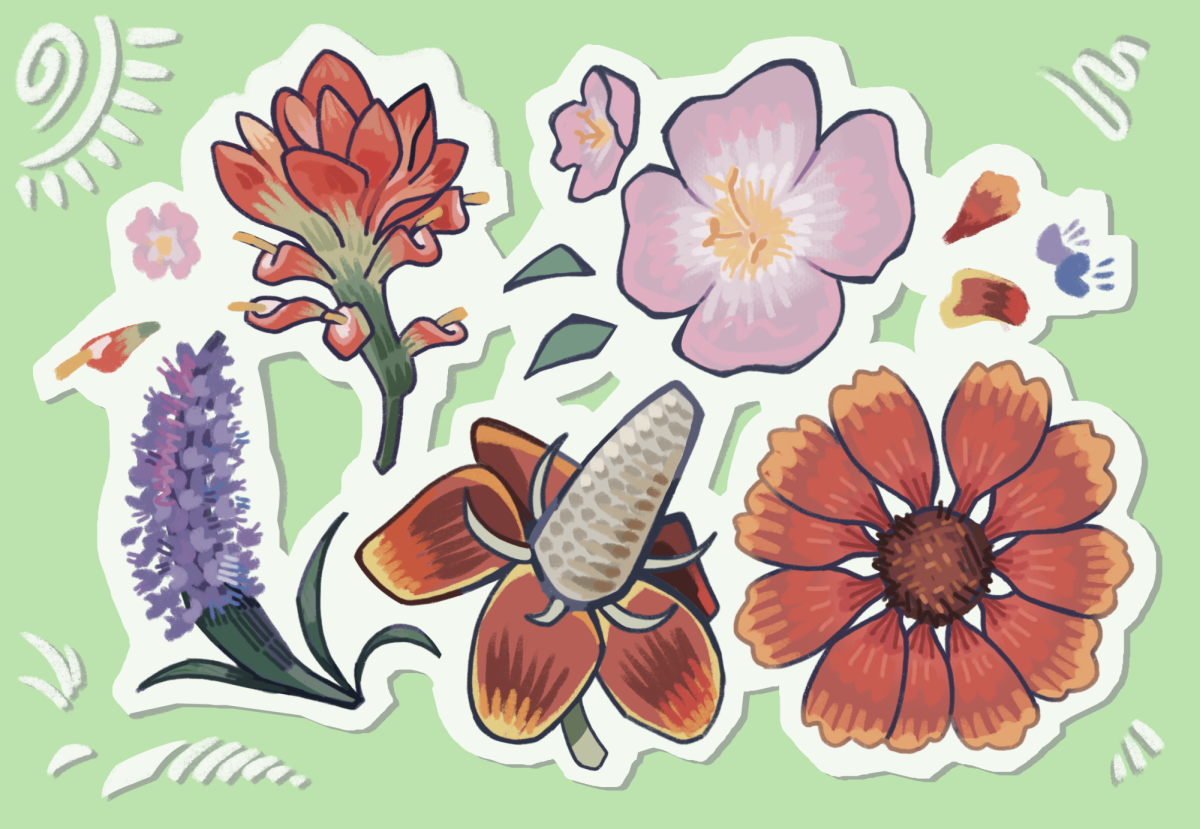Though bluebonnets are the classic Texas roadside adornments, several other wildflowers will begin to bloom soon. Here are five less commonly known native wildflowers, some of which can be spotted already.
Mexican Hat (Ratibida columnifera)
Also known as the prairie coneflower, this perennial blooms from May to October, and has flower heads which resemble the traditional Mexican sombrero, hence the name. This flower is highly favored by insects who seek nectar and features medicinal properties. Its leaves, stalks and blooms are all used in a variety of teas.
Pink Ladies (Oenothera speciosa)
Native to the U.S. grasslands, this generally hardy perennial blooms from February to October. Though plentiful, each flower only has a 24-hour lifespan, and creates new blooms each day. Many local varieties of this wildflower open in the morning, despite being known as the evening primrose.
Indian Blanket (Gaillardia pulchella)
Officially considered the state wildflower of Oklahoma, this annual plant (also known as the firewheel) comes from the same family as the sunflower and daisy, and serves as a common roadside decoration near south Texas. Its roots are known for their ability to treat some skin conditions and gastroenteritis, and can serve as a diuretic when added to tea.
Gayfeather (Liatris mucronata)
Commonly referred to as the Texas blazing star, this tall purple perennial favors the late summer and drier weather conditions. Its seeds are notorious as a food source for birds, and other variants of its species often have their roots used to treat snake bites.
Indian Paintbrush (Castilleja indivisa)
Not to be confused with the Texas indian paintbrush, which is native to California, this wildflower and other members of its species are hemiparasitic, meaning they draw some of their nutrients from other plants and grasses. The genus name, Castilleja, honors Spanish botanist Domingo Castillejo, while the common name refers to the vibrant red petals that look as if they’ve been dipped into paint.









